Augmented Reality: The Perfect Fit For Fashion Ecommerce in 2021
Find out how augmented reality is redefining fashion ecommerce and helping retailers overcome the challenges thrown at them by the ongoing COVID pandemic.
Written By
Hannah Smiddy
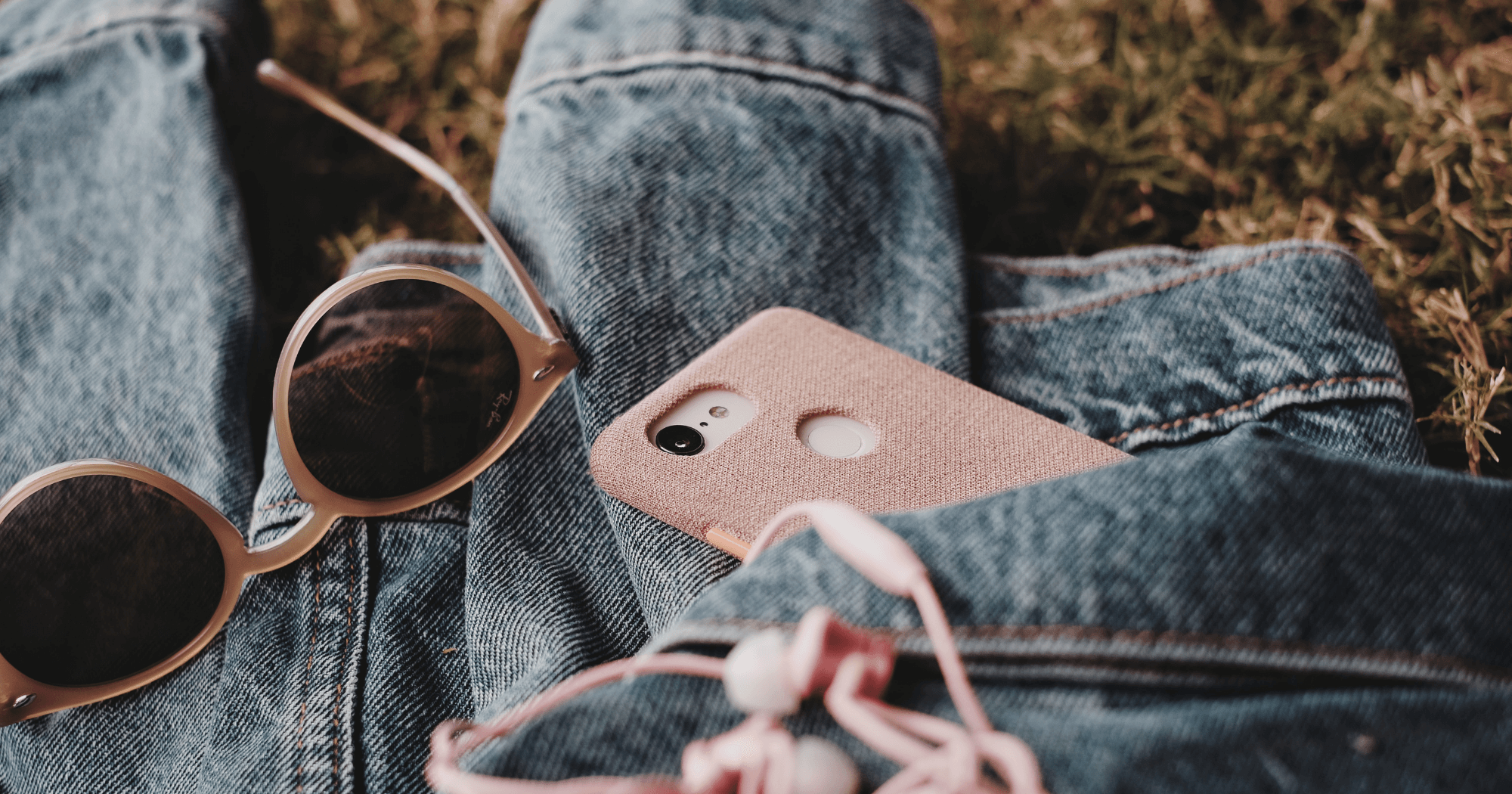
Augmented reality (AR) has long been seen as a futuristic, somewhat abstract technology within the ecommerce industry – something that would be nice to play around with one day; a novelty rather than a priority.
Now though, with many brick-and-mortar stores off-limits and online competition increasing, attitudes towards AR and its role in ecommerce have shifted significantly, particularly within the fashion industry.
Retailers are being forced to rethink their priorities. They’re having to embrace trends, tools and technologies that will allow them to serve up compelling customer experiences and win the loyalty of today’s shoppers.
One of these technologies is AR. Seen as a bridge between physical and digital commerce, it makes a perfect fit for fashion retail and the challenges this industry is facing. It’s emerging as an urgent area of investment for many ecommerce retailers, and fast becoming a competitive differentiator as fashion brands do battle for customers and conversions in the age of COVID.
Join us as we explore the benefits of augmented reality for fashion ecommerce, before examining some of the retailers already embracing this game-changing technology.
What is augmented reality?
Augmented reality, or AR, is an immersive 3D technology that integrates digital information with a user’s existing physical environment. It superimposes computer-generated images onto a real-life view, allowing you to change your perception of the world in real-time.
This type of technology has applications in all sorts of industries, including retail, education, mapping and navigation, and entertainment.
What are the benefits of augmented reality for fashion ecommerce?
As an online fashion brand, you can leverage AR to drive awareness of your brand and attract new shoppers, improve the customer experience for existing consumers, and encourage people to become brand advocates – all whilst driving revenue and improving your margins.
Let’s dive into some of the biggest benefits of AR in fashion ecommerce:
Attracts new shoppers
A fun and innovative AR feature is sure to create a buzz around your brand, forming a popular talking point across social media and in industry news circles.
This is ideal for spreading the word about your company and your products, helping to attract new shoppers to your site without investing in costly acquisition tactics.
Increases customer engagement
After months of lockdown and store closures, isolated and disengaged consumers are hungry for immersive shopping experiences like those that AR can offer. Now more than ever, the experiential nature of AR will keep users hooked to your site.
The longer someone spends on your ecommerce store, the deeper the connection they develop with your brand and the more likely they are to buy something.
And, fear not, even if they don’t click ‘Buy’ during their first visit, they’re more likely to come back and buy something in the future because of the increased engagement.
Boosts buyer confidence
The virtual equivalent of “try before you buy”, AR helps customers understand exactly what they’re buying before committing to an order, removing the guesswork so commonly associated with ecommerce purchases.
In the fashion industry, this means customers being able to assess size and fit, whilst getting a sense of the true quality of an item. They can gather much more information from an AR model than a static 2D image, making it easier to come to a purchasing decision.
Increases conversions
Not only has AR been shown to keep people on your site longer and make them feel more confident about your products, we know that this can actually translate into increased sales.
According to Shopify, interacting with a 3D model in AR can increase conversion rates by up to 250% on product pages!
Builds brand loyalty
The unique, empowering experience provided by AR can help build brand loyalty and improve customer retention. In fact, according to research, 70% of consumers are expected to be more loyal to brands that incorporate AR as part of their shopping experience.
During this period of fierce online competition and high acquisition costs, leveraging AR on your ecommerce store could be a retention tactic worth investing in.
Reduces return rate
Painfully pricey and problematic, ecommerce returns send a shudder down many an online retailer’s spine.
Fashion brands are often the hardest hit by returns, with 30-40% of clothing and accessories purchased online being returned, often a result of consumers over-purchasing to test out different options. This can have damaging consequences for business’ profit margins, not to mention the negative impact it has on the environment.
However, it’s not all doom and gloom.
Try-before-you-buy AR initiatives represent an exciting opportunity to help reduce return rates in the fashion industry. Giving shoppers a chance to visualise a product and even try it on (albeit virtually), should make them feel more confident in their purchasing decision and eliminate the need to buy multiple versions of one product.
Provides valuable consumer data
In today’s crowded ecommerce market, personalisation is an important tool in your marketing armoury. Customers want to feel understood and valued. They want a shopping experience tailored to their own unique needs. You can use data from AR sessions to help achieve this.
Session data can inform the content that you display to customers at other touchpoints in their brand experience. For instance, you can retarget someone with a personalised ad that features products from the same collection as one they’ve interacted with via AR.
What’s more, you can dig into session data to see how shoppers are interacting with products. Do shoppers tend to zoom in on one part of a product more frequently? Are they interested in any particular details? Answers to these questions can be used to inform your product development strategy.
How fashion brands are using augmented reality
Things like social media filters, product visualisation experiences and even virtual fitting rooms are already delighting retailers and customers alike in the fashion industry. Let’s explore these AR solutions in some more detail.
And, if you’re looking for some inspiration from retailers who are successfully embracing this technology, maybe one of the brands featured below could be your augmented reality fashion muse!
Social media AR filters
An effective and affordable entry into the world of AR, social media filters are a great way for brands to showcase a new product or collection in a way that attracts attention, drives brand awareness and increases engagement – and all at a low production cost.
H&M: AR Instagram filters
To promote the launch of its Autumn 2020 “Kangol feat. Mabel” collection, global fashion retailer H&M introduced six new AR filters on Instagram specifically for the occasion. The filter allowed users to create their own shareable music videos featuring streetwear from the new range.
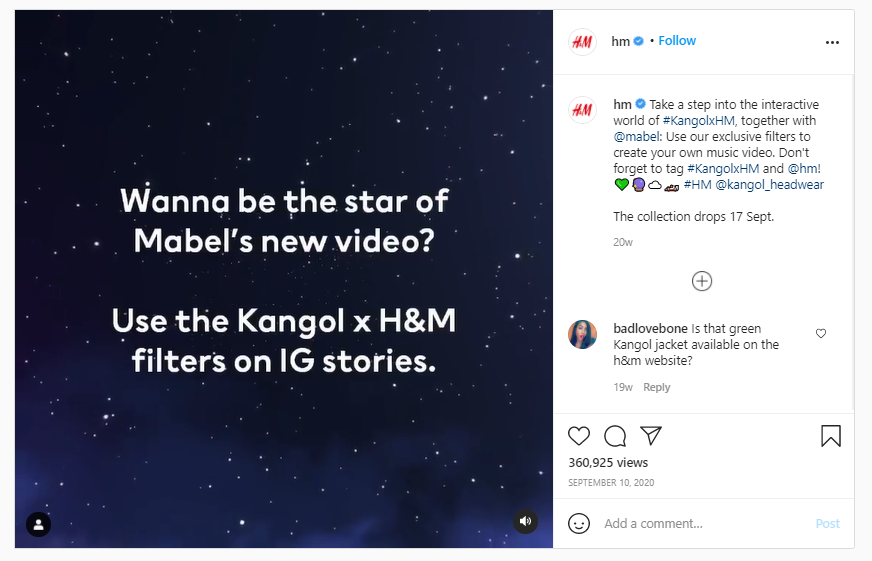
Image source: Instagram
This is a great example of how brands can leverage AR to connect with target consumers through a unique, brand-specific experience and increase awareness through social sharing.
Gucci: Shoppable AR Snapchat filter
From highstreet favourite to luxury fashion house, Gucci adapted to the recent increase in online shopping and social media usage by starting to offer shoppable AR experiences on Snapchat.
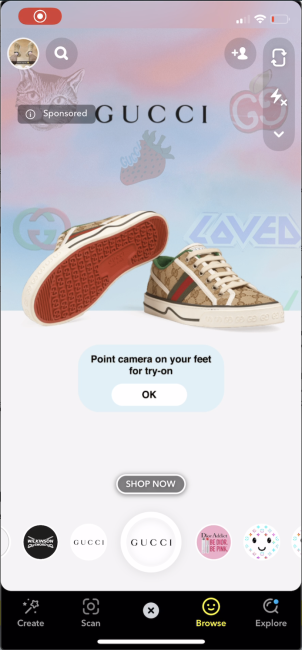
Image source: Snapchat For Business
Users can virtually try on shoes from the brand’s latest collection thanks to a digital overlay that appears when they point their camera at their own feet.
There’s even a ‘Shop Now’ button within the AR filter which allows users to purchase the same shoes directly from the brand’s online store – an example of how Snapchat is working with brands to merge AR and ecommerce.
The results of Gucci’s Snapchat AR filter spoke for themselves, with a reach of 18.9 million users, above-average lens playtimes and positive ROAS.
Product visualisation
As we’ve mentioned, one of the benefits of AR within fashion ecommerce is letting customers get up close and personal with products without being in a physical store. With just their smartphone, people can enjoy an informative and engaging visual experience that beats scrolling through 2D product photographs.
Asos: See My Fit AR system
In an attempt to promote new products to housebound shoppers during lockdown whilst avoiding physical photoshoots, fashion giant Asos accelerated their trial of an AR system called “See My Fit”, which digitally maps clothes onto models in a realistic way, taking account of the size, cut and fit of each garment.
The resulting simulation shows shoppers how an item of clothing could look on 16 different models, each of different body types, ages and ethnicities.
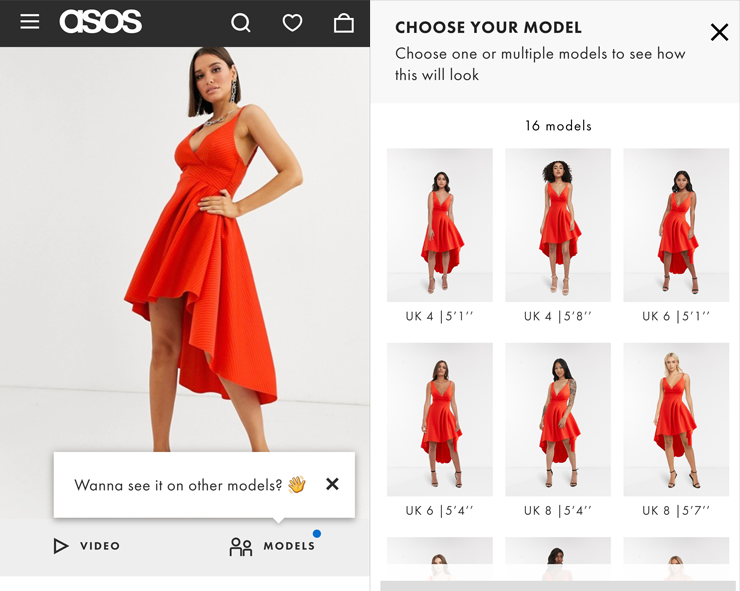
Image source: Ecommerce News Europe
Discussing the benefits of See My Fit, Yael Vixel, Chief Executive of the AR company behind the technology, said:
“With our patented, artificial intelligence-based AR technology powering See My Fit, we can connect the dots between what you see when shopping and what you receive at home, giving customers more confidence in purchasing the products they love.”
Rebecca Minkoff: Product page AR functionality
In order to bring its products to life online, global high-fashion brand Rebecca Minkoff incorporated AR functionality directly on its product pages. This AR view allows shoppers to virtually place a handbag in front of them and view it from all angles, allowing for a much more intimate encounter.
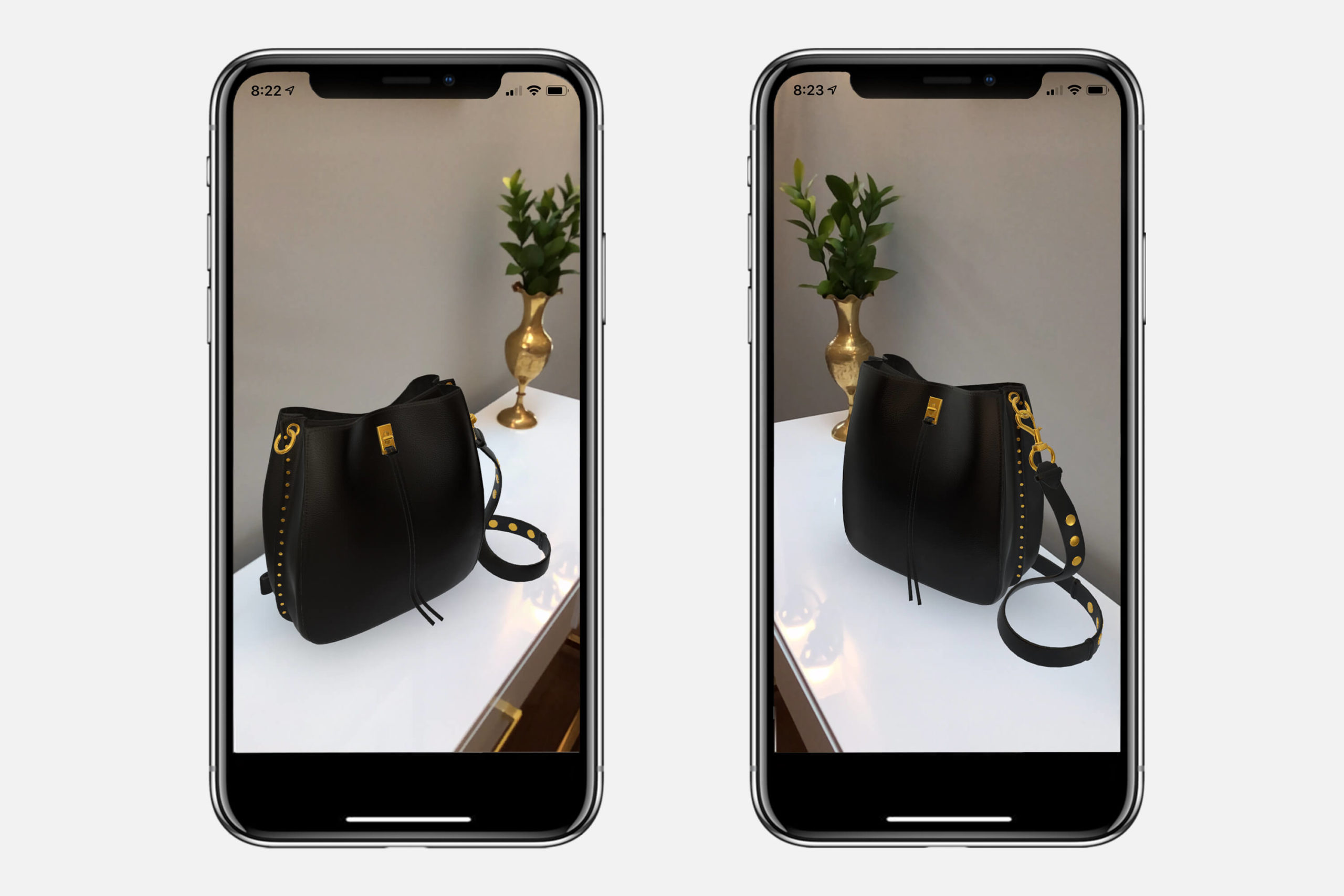
Image source: Vogue Business
The result? Shoppers were 65% more likely to make a purchase!
Speaking to Shopify Plus about the benefits of AR, Uri Minkoff, Co-founder and CEO of Rebecca Minkoff, said:
“3D media makes for a much more interactive shopping experience. Customers can examine our products from every angle, including the option to view products in augmented reality, which helps them get a better sense of quality, size, and other details that matter.”
Virtual try-on
Virtual try-on initiatives are closing the gap between traditional brick-and-mortar retail and ecommerce, giving shoppers an accurate sense of the look and fit of products from the comfort of their own home.
GOAT: Try-on app
Back in 2019, sneaker and apparel resale brand GOAT launched an AR try-on feature on their iOS app, which allowed shoppers to virtually try on sneakers before committing to a purchase.
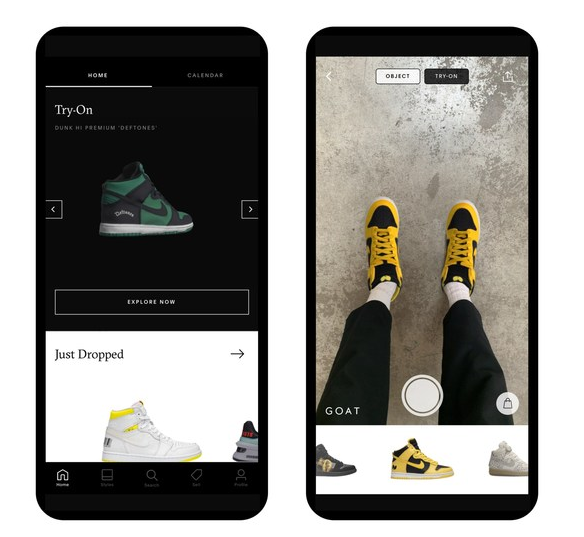
Image source: Charged Retail
It was co-founder Daishin Sugano’s hope that the new feature would “elevate the experience of discovery” for the GOAT community, allowing shoppers to see what some of the most exclusive sneakers look like on their own feet.
Tenth Street Hats: Product pages enhanced with try-on tech
California-based Shopify retailer Tenth Street Hats deployed AR try-on technology directly on its ecommerce store’s product pages, allowing shoppers to virtually test out selected hats on both mobile and desktop without having to download an app.
The tool works by superimposing a real-time image of the hat onto the user’s head, helping to increase purchasing confidence.
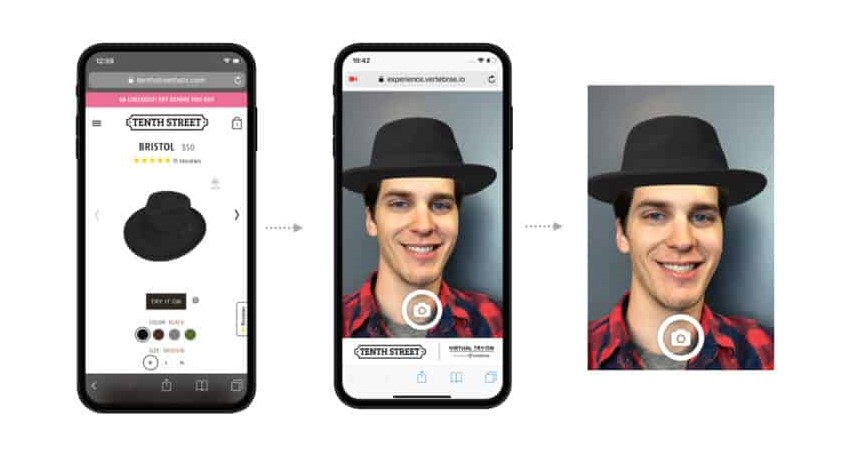
Image source: Digital Commerce 360
Less than a year after implementing the swanky new feature, the brand was already enjoying some impressive results. For shoppers who engaged with the AR tech, conversion rate increased by 52% and revenue per user was up by 41.8%. Data also showed that the longer a consumer engaged with the tool, the higher their average order value became.
As well as an uplift in key ecommerce metrics, CEO Carson Finkle noticed benefits for product development too:
“With the technology, we can see what a shopper is really looking at and the parts they’re really interested in. We collect that consumer data from a product development standpoint.”
Augmented reality for Shopify merchants
For Shopify merchants, Shopify AR enables you to create immersive on-site shopping experiences for your customers through 3D modelling.
Customers are able to enlarge products for in-depth analysis, explore items from all angles with a 360-degree viewer, and even place items virtually in their physical environment using their mobile device.
Find out more on the Shopify Help Centre.
Wrapping up
AR is redefining online fashion retail. A proven tool to increase brand awareness, boost customer engagement and drive sales, it offers a host of benefits for shoppers and merchants alike.
Against a backdrop of increasing online competition and costly acquisition activities, expect to see AR playing a much more significant role in ecommerce retailers’ quest for customers and conversions throughout 2021!
Your Shopify Plus Agency
To find out how the team at Swanky could help your ecommerce business adapt to the fast-evolving retail landscape, get in touch today! Our team of Shopify Plus experts are passionate about equipping online retailers with the tools and technology they need to unlock their full ecommerce potential.

